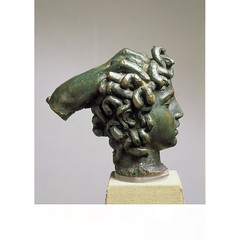By Stuart Frost
If you have been to the V&A recently you’ll have noticed that there is great deal of work underway as part of the development of new facilities and displays. You may have noticed new hoardings related to the Medieval and Renaissance Galleries, one of several major projects currently underway. When these are all complete the experience for visitors to the V&A will be significantly improved.
In order for building work to take place, and for new displays to be installed, it is inevitable that some galleries have to be closed temporarily and the objects in them removed. This has provided an opportunity for the Museum to create a touring exhibition of medieval and Renaissance treasures so that the objects can be seen more widely. I’ll provide more information about this is in my next entry. However the V&A is also working hard to ensure that as much of the collections are kept on display as possible.
With regard to the medieval and Renaissance collections there are several highlights galleries which will remain for as long as possible. Room 46 includes highlights of objects from 300-1500. Rooms 17-20 feature many of the Museum’s most important Renaissance works from 1400-1600. In addition a new display has just been installed in Room 117. It includes sculptures by renowned artists like Michelangelo and Giambologna, but also examples of metalwork, enamelling and ceramics. My favourite object is a small bronze sculpture by Benvenuto Cellini.
Artists from the medieval and Renaissance period can seem very distant or remote figures, and it is sometimes difficult to get a sense of them as real people. Cellini is one of several exceptions. No one could ever accuse him of lacking personality. He wrote an extraordinary autobiography which gives a remarkable account of his life and the times in which he lived. Like any autobiography it is selective. He doesn’t mention, for example, the charges that were brought against him for sodomy, nor is he balanced in his judgements about his fellow artists and their work. He does however provide a fascinating account of the casting of the statue of Perseus, for which the V&A’s Medusa’s head was a model. The account of the casting of the Perseus makes it one of the best-documented sculptures of the Italian Renaissance. The casting of the figure almost failed but, against the odds, Cellini rescued the statue by throwing all his pewter kitchen utensils into the furnace. Whenever I look at his Head of Medussa, which isn’t often enough, this colourful passage from his book comes to mind. His autobiography is easily available and I recommend it unreservedly as a rip-roaringly good read.
For those of you who are unable to visit Room 117 additional information about the small display has been added to the website. If you have been to see the display please post a comment to let us know what you think of it.
Find out more information about the Medieval and Renaissance Galleries

